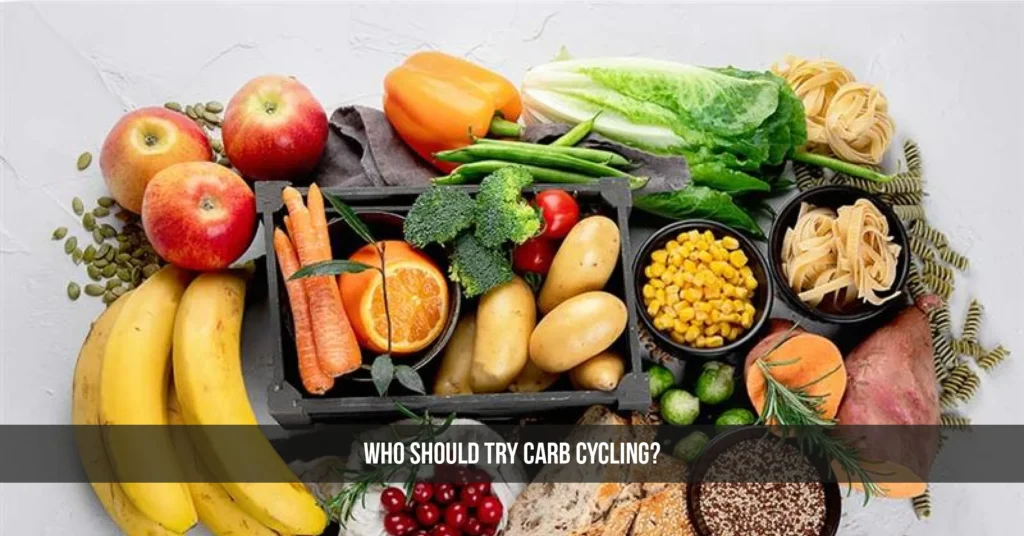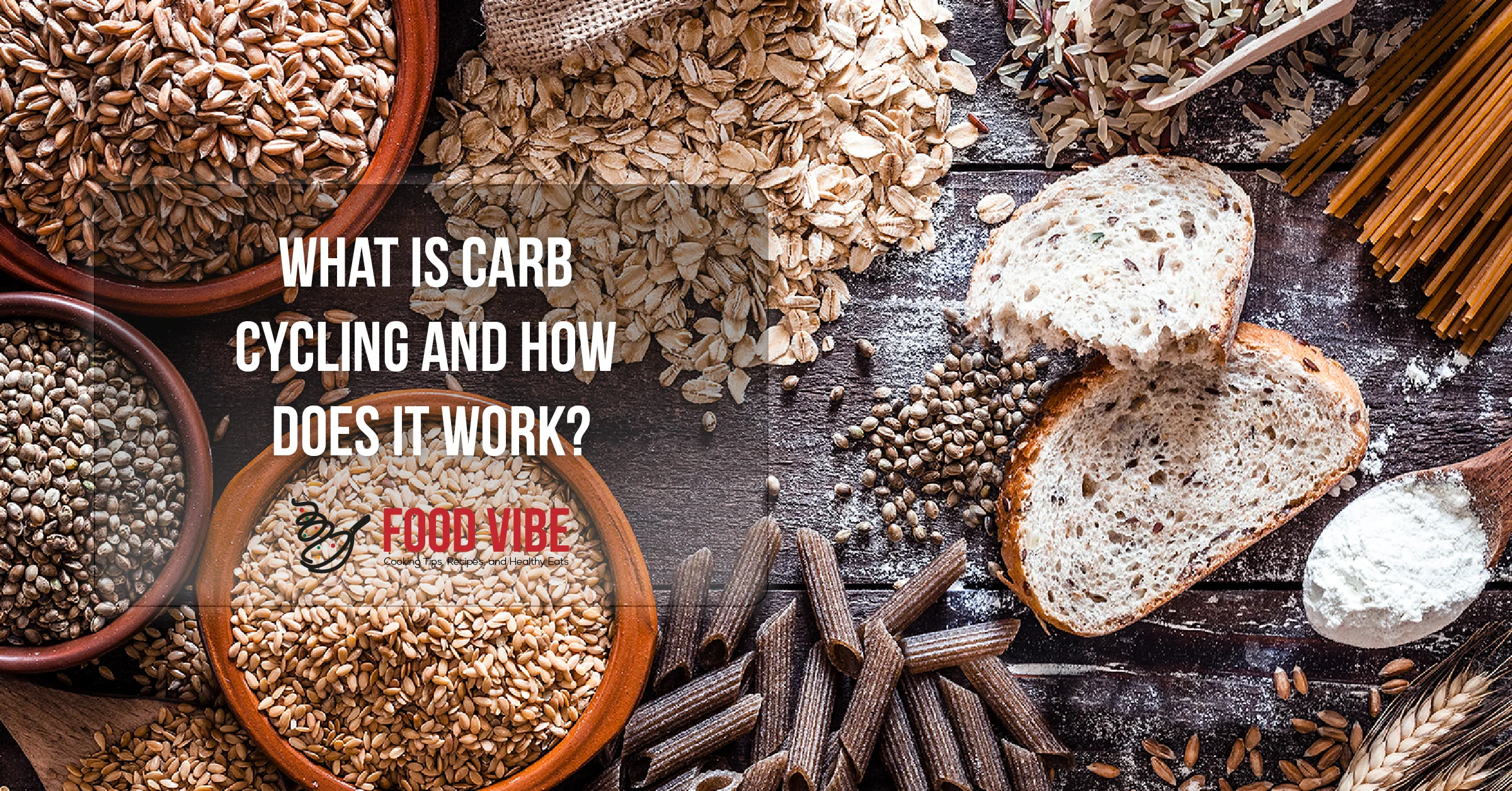What is Carb Cycling and How Does It Work?
Struggling to balance weight loss and energy levels? Carb cycling might be the solution you’ve been searching for. This flexible eating plan alternates between high-carb and low-carb days to help you lose fat, build muscle, and maintain energy. Whether you’re an athlete, a fitness enthusiast, or someone looking to break through a weight-loss plateau, carb cycling offers a customizable approach to nutrition. In this guide, we’ll break down what carb cycling is, how it works, and how you can use it to achieve your health and fitness goals.
Table of Contents
What is Carb Cycling?
Carb cycling is a dietary strategy that involves alternating between high-carbohydrate days and low-carbohydrate days. The idea is to time your carb intake based on your activity levels. On days when you’re more active (like workout days), you eat more carbs to fuel your performance and recovery. On rest days or less active days, you reduce your carb intake to promote fat burning.
Unlike strict diets like keto, which require you to cut carbs almost entirely, carb cycling offers more flexibility. It’s not about eliminating carbs but rather using them strategically to support your goals. This approach has gained popularity among athletes, bodybuilders, and anyone looking to optimize their body composition.
How Does Carb Cycling Work?
At its core, carb cycling works by manipulating your body’s energy sources. Here’s the science behind it:
- High-Carb Days: On these days, you eat more carbohydrates to replenish glycogen stores in your muscles and liver. Glycogen is your body’s preferred source of energy during intense workouts. By eating more carbs on active days, you ensure your body has enough fuel to perform at its best.
- Low-Carb Days: On rest days or less active days, you reduce your carb intake. This forces your body to tap into fat stores for energy, promoting fat loss. Low-carb days also help improve insulin sensitivity, which can be beneficial for long-term metabolic health.
- Hormonal Impact: Carb cycling can influence hormones like insulin, leptin, and cortisol. For example, high-carb days can boost leptin levels, which helps regulate hunger and metabolism. Low-carb days, on the other hand, can improve insulin sensitivity, making it easier for your body to manage blood sugar levels.
- Timing Matters: One of the keys to successful carb cycling is timing your carb intake around your workouts. Eating carbs before and after exercise can enhance performance and recovery, while limiting carbs on rest days can help you stay in a fat-burning state.

Benefits of Carb Cycling
Carb cycling isn’t just a trend—it’s a scientifically backed approach with several benefits:
- Weight Loss and Fat Burning: By alternating between high-carb and low-carb days, you can create a caloric deficit while still enjoying the energy-boosting benefits of carbs.
- Improved Energy Levels: High-carb days ensure you have enough fuel for intense workouts, while low-carb days help stabilize energy levels by reducing blood sugar spikes.
- Enhanced Muscle Recovery: Carbs play a crucial role in muscle repair and growth. High-carb days can speed up recovery after tough workouts.
- Better Insulin Sensitivity: Low-carb days can improve your body’s ability to process glucose, reducing the risk of insulin resistance.
- Dietary Flexibility: Unlike restrictive diets, carb cycling allows you to enjoy carbs in moderation, making it easier to stick to long-term.
Who Should Try Carb Cycling?
Carb cycling isn’t for everyone, but it can be a great fit for certain individuals:
- Athletes and Bodybuilders: If you’re training intensely, carb cycling can help you fuel your workouts and recover faster.
- Weight Loss Seekers: If you’ve hit a plateau with traditional diets, carb cycling can kickstart your progress.
- Fitness Enthusiasts: If you want to improve your body composition without giving up carbs entirely, carb cycling offers a balanced approach.
- People Seeking Dietary Flexibility: If you’ve struggled with restrictive diets, carb cycling allows you to enjoy a wider variety of foods.
However, carb cycling may not be suitable for people with certain medical conditions, such as diabetes or metabolic disorders. Always consult a healthcare professional before starting any new diet.

How to Start Carb Cycling
Ready to give carb cycling a try? Here’s a step-by-step guide to get started:
- Determine Your Goals: Are you looking to lose weight, build muscle, or improve athletic performance? Your goals will influence how you structure your carb cycles.
- Calculate Your Macros: Use an online calculator to estimate your daily caloric and macronutrient needs. A typical carb cycling plan might look like this:
- High-carb days: 50-60% carbs, 20-30% protein, 20-30% fat.
- Low-carb days: 10-20% carbs, 40-50% protein, 30-40% fat.
- Plan Your Schedule: Match your carb intake to your activity levels. For example:
- High-carb days: 2-3 days per week (workout days).
- Low-carb days: 4-5 days per week (rest days).
- Choose the Right Foods: Focus on nutrient-dense, whole foods. Here’s a breakdown:
| High-Carb Days | Low-Carb Days |
|---|---|
| Whole grains (oats, quinoa) | Leafy greens (spinach, kale) |
| Fruits (bananas, berries) | Non-starchy veggies (broccoli, zucchini) |
| Starchy veggies (sweet potatoes) | Lean proteins (chicken, fish) |
| Legumes (beans, lentils) | Healthy fats (avocado, olive oil) |
- Track Your Progress: Keep a food diary or use an app to monitor your intake and adjust as needed.
Carb Cycling Meal Plan
Here’s a sample meal plan to give you an idea of what carb cycling looks like in practice:
High-Carb Day:
- Breakfast: Oatmeal with berries and a scoop of protein powder.
- Snack: Apple slices with almond butter.
- Lunch: Quinoa bowl with grilled chicken, black beans, and veggies.
- Snack: Greek yogurt with honey and granola.
- Dinner: Sweet potato, salmon, and steamed broccoli.
Low-Carb Day:
- Breakfast: Scrambled eggs with spinach and avocado.
- Snack: Celery sticks with hummus.
- Lunch: Grilled chicken salad with olive oil dressing.
- Snack: Handful of nuts.
- Dinner: Grilled shrimp with zucchini noodles and pesto.
Carb Cycling vs. Other Diets
How does carb cycling stack up against other popular diets? Let’s compare:
| Diet | Pros | Cons |
|---|---|---|
| Carb Cycling | Flexible, sustainable, supports performance | Requires planning and tracking |
| Keto | Rapid fat loss, reduces appetite | Restrictive, can cause low energy |
| Intermittent Fasting | Simple, improves insulin sensitivity | May lead to overeating during eating windows |
| Calorie Restriction | Easy to understand | Can be unsustainable, may lead to muscle loss |

Common Mistakes to Avoid
Even with a solid plan, it’s easy to make mistakes. Here are some pitfalls to watch out for:
- Overeating on High-Carb Days: Just because it’s a high-carb day doesn’t mean you can go overboard. Stick to your calorie goals.
- Ignoring Protein and Fat: Don’t focus so much on carbs that you neglect protein and healthy fats.
- Not Adjusting Based on Activity: Your carb intake should match your activity level. Don’t eat high-carb on rest days.
- Failing to Track Progress: Without tracking, you won’t know if carb cycling is working for you.
- Expecting Immediate Results: Like any diet, carb cycling takes time to show results. Be patient and consistent.
Conclusion
Carb cycling is a flexible and effective dietary strategy that can help you achieve your health and fitness goals. By alternating between high-carb and low-carb days, you can optimize energy levels, promote fat loss, and support muscle growth. Whether you’re an athlete, a fitness enthusiast, or someone looking to break through a weight-loss plateau, carb cycling offers a balanced and sustainable approach to nutrition.
Ready to give it a try? Start by planning your carb cycling schedule and experimenting with different meal plans. Remember, consistency is key—stick with it, and you’ll likely see the results you’re aiming for.
Also Read: Intermittent Fasting Diet: What You Need to Know
FAQs
Can carb cycling help with weight loss?
Yes, carb cycling can be an effective tool for weight loss. By alternating between high-carb and low-carb days, you create a caloric deficit while still providing your body with the energy it needs for workouts. Low-carb days promote fat burning, while high-carb days prevent metabolic slowdown.
Is carb cycling safe for long-term use?
Carb cycling is generally safe for most people, but it’s important to listen to your body. If you feel fatigued or notice negative effects, you may need to adjust your carb intake. Always consult a healthcare professional before making significant changes to your diet.
How do I know if carb cycling is working?
Track your progress by monitoring changes in your weight, body composition, energy levels, and workout performance. If you’re seeing positive changes, carb cycling is likely working for you.
What are the best carbs to eat on high-carb days?
Focus on nutrient-dense, whole-food sources of carbs like whole grains (oats, quinoa), fruits (berries, bananas), starchy vegetables (sweet potatoes), and legumes (beans, lentils).
Can I combine carb cycling with other diets?
Yes, carb cycling can be combined with other dietary approaches like intermittent fasting or a high-protein diet. However, it’s important to ensure you’re still meeting your nutritional needs.














Post Comment